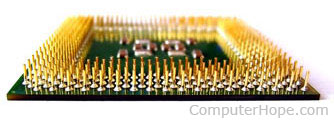How to increase processor speed

Increasing the speed of a computer processor, or CPU (central processing unit), is not an easy thing to do. There are essentially two options for accomplishing this task: overclocking or buying and installing a new one. Both options require a strong knowledge of computer hardware, and the first option requires you to use BIOS (basic input/output system).
Overclocking the processor
Some computer processors are capable of being overclocked, which is increasing the clock speed at the expense of more power usage and heat output. A processor can be overclocked by adjusting jumpers or dip switches, installing firmware updates, or configuring CMOS (complementary metal-oxide semiconductor) settings. There are also programs that are capable of configuring the overclock settings.
Overclocking can result in damage to the processor, and other hardware. Make sure you have a heat sink and fan that are capable of dissipating the increased heat generated by overclocking the processor. You'll also need diagnostic tools and appropriate knowledge of your processor's limitations. Proceed with caution.
Before working inside of your machine, make sure you're aware of the dangers of ESD (electrostatic discharge).
Upgrading the processor
Due to the risks of overclocking, or the inability to overclock some processors in general, it may be best to buy a new processor. Before attempting to upgrade your processor, make sure your motherboard is compatible. Often, new CPUs utilize different architecture or dimensions, requiring you to purchase a new motherboard as well.
